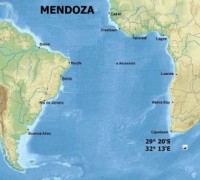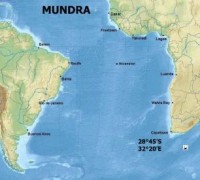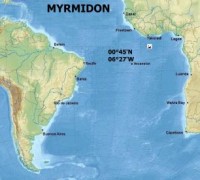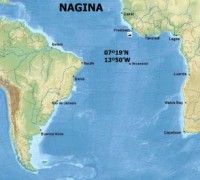- M N O
9)MUNCASTER CASTLE U-68
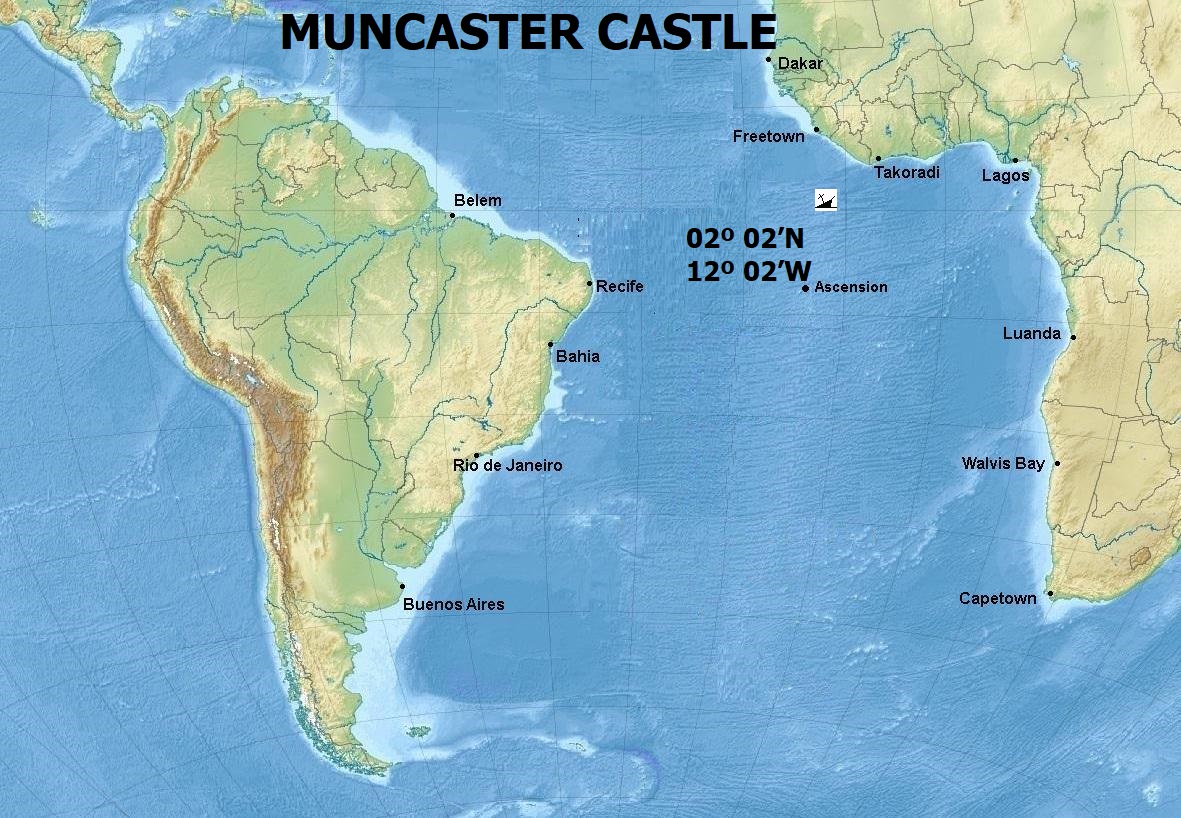

Photo www.uboat.net

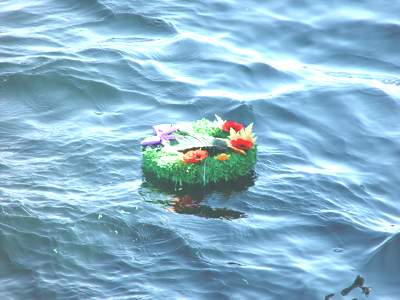
Built 1928
Tonnage: 5,853 / 8,944 tons
Cargo: 265 Navy, Army and RAF personnel, 71 crewmembers, twelve DEMS gunners and 3000 tons of government stores and trucks
Route: Glasgow - Freetown - Capetown - Colombo
Sunk 30 MAR 42 by U-68 on pos 02º 02’N 12º 02’W
24 Dead
329 Survivors
At 22.43 hours on 30 March 1942 the Muncaster Castle (Master Harold William Harper) was hit by a two torpedo spread from U-68 south-southwest of Monrovia. The U-boat earlier observed how the ship was dispersed from convoy ST-18 at 13.35 hours and followed the heavy zigzagging ship, running at 13 knots, until she stopped zigzagging in the darkness.
The vessel settled immediately after the hits but did not sink and Merten had to use his last torpedo as a coup de grâce at 23.16 hours. After the ship sank by the bow, the Germans observed more than ten lifeboats and questioned the survivors in one of them before leaving the area on home course.
Four crew members, one gunner and 19 passengers were lost. The master, 69 crew members, eleven gunners, two naval signalmen and 246 passengers were picked up by HMS Aubretia (K 96) (LtCdr V.F. Smith, DSO, RD, RNR) and the Greek steam merchant Ann Stathatos and landed at Freetown. The master, Harold William Harper, was awarded the Lloyds War Medal for bravery at sea.
By Muncaster Castle (British Motor merchant) - Ships hit by German U-boats during WWII - uboat.net
%2C_1941%2C_port_side.jpg)
Above HMS Aubretia Photo
https://upload.wikimedia.org/wikipedia/commons/6/6f/HMS_Aubrietia_%28K96%29%2C_1941%2C_port_side.jpg
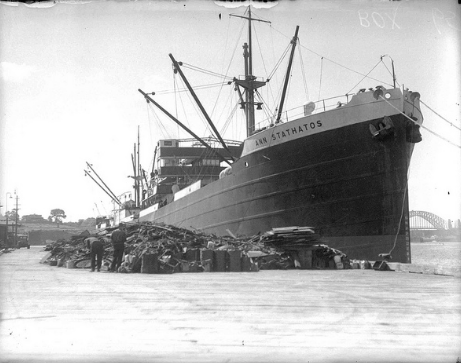
Ann Stathatos above. The greek merchant was the first ship to come to scene when rescued 239 survivors. Photo Australian National Maritime Museum’s Samuel J. Hood Studio collection.
REPORT FROM ONE SURVIVOR.
Towards the end of February 1942 we sailed as part of a large convoy, with a warship escort which included for a period the battleships HMS Rodney and HMS Nelson.
I first saw action in the Bay of Biscay when two FW 220 (Condor) aircraft bombed the convoy. The Condors stayed circling most of the day until one of our planes, a Catalina Flying boat, came on the scene. After a brief dogfight, the ‘Cat’ chased the Condors off. One ship was damaged but fortunately most of the bombs missed as the Condors had to bomb from a great height because the anti-aircraft fire from our escorts was so heavy.
The convoy sailed on and anchored in Freetown, North West Africa where we stayed a few days before continuing on our journey bound for Cape Town, South Africa. A day and a half after leaving Freetown our ship left the convoy and continued towards Cape Town on her own. Two days later, at around 6 p.m. on Monday 30th March 1942, a torpedo hit us midships. I ran to my gun, loaded it and looked through the telescope but couldn’t see anything as, by then, it was getting quite dark.
The ship was slowly sinking and you cold hear the cries of the ratings in one of the holds. I went to my boat station but the lifeboat was tipped up and hanging by one 'fall down' near the water. I tried to release it with men running all around when another torpedo hit the ship midships and the deck by the side of me split with a great 2 foot wide crack.
I jumped over the side and swam off as the ship went down very quickly. I had swum for about 200 yards when, finding myself in the middle of floating debris, I clambered on to what I found out later to be the side of one of the troop galleys that had formerly been built on the deck. My new ‘boat’ was about 20 feet long by 8 feet wide covered in nails, which were sticking up all round. In the centre was a type of Ascot heater about 3 feet long to which I clung for the rest of the night.
The next morning the ship’s main motor boat, which had been got away, came round picking up the survivors who were hanging on to all sorts of floating objects. The motor boat couldn’t hold everybody and so most of the survivors were put on to the more seaworthy of the floating objects which were then tied together and taken in tow. There were rafts, Carley floats, Boom defence tanks (part of the cargo which had been blown out of the holds) and all sorts of other floating junk, I was put on a Carley float.
Later on that day the U-boat that had torpedoed us surfaced and a request was made for the Captain of the Muncaster Castle to identify himself. The Captain, who was in the motor boat and had taken the precaution of removing his rank identifying epaulets, kept mum. After a while the Germans accepted that he could not be easily identified and they kindly gave us a course for the Ascension Isles, which they said was 450 miles away, and let us go on our way unmolested. I have no doubt that the Captain would have been taken aboard the U-boat as a prisoner if they had identified him.
I later learned that the U-boat was the U. 68. under the command of Commander Karl-Friedrich Merton RE of the Imperial German Navy. During the 1980’s I heard that he had written to the D.E.M.S. association expressing a desire to contact the survivors of ships he had torpedoed. A list of the ships was given him and this included the MV Muncaster Castle. I did not take up his offer.
During the time we were being towed, we took turns to do six-hour spells on each of the crafts, Carley floats, Boom defence tanks or a raft. The motor boat was used to transfer each group between them. The worst of these spells were those spent on the Boom defence tanks because these had only two diagonally opposite large rings on an otherwise smooth sloping surface. There was only room for one man to sit inside each ring and everybody else had to hang on as best they could! It was also very bad on the Carley floats as you had to sit with your legs in the water with a net underneath. The water washed up and down your back when the float rocked. Once in a while you got a spell in the boats of which there were two, one lifeboat and the main motorboat. During your ‘cruising’ spell you would have the luxury of a ‘peg of water’ and a couple of hard biscuits which had to last the whole day.
As we were drifting around in groups on the rafts and Carley floats we could see small sharks about 4 feet long circling round within about 6 feet or so. I took a swipe at them a few times but it didn’t seem to bother them at all, as they would just roll over on their side, then roll back again and carry on swimming round and round. Matelots (a sailor) and soldiers who spotted mates on the other rafts would just jump into the sea and swim to each other but the sharks never touched anybody as far as I know. I spotted a lad (named Lawton) who lived in my street, I swam over and had a chat with him; he was in the RN going to Trincomalee.
On the Friday evening of that eventful week a Sunderland flying boat spotted us. The sea proved to be too rough for it to land so the pilot dropped a parachute with a few supplies in it and a message which said: “Sorry, unable to land, will send help as soon as possible”. The next morning we sighted a ship, identified as a Corvette (the Aubrietia), which was looking for us. We let off flares and she came and picked us all up. It was very crowded seeing as there were around 250 passengers plus the crew of the ill-fated Muncaster Castle.
By THOMAS KAY
1st July 1921 to 26th March 2002
www.bbc.co.uk/history/ww2peopleswar/stories/53/a2048753.shtml
